The kingdom circles are a great way to begin a spiritual conversation. They are not intended to be a gospel presentation, but can help us determine if our friend is a person of peace and provide a framework so we can talk about things that really matter. Many need this framework considering how easy it is to get sidetracked on politics or minor points of theology. For example, some will argue about whether God provided a ram or a lamb in place of Abraham’s son, which seems so small of a point we need a microscope just to find it. John 4:11-12 records the woman at the well asking Jesus several questions about side issues, but Jesus simply directs her to what really matters. Likewise, the kingdom circles help us focus on the big picture so we can present Jesus as soon as possible. As we saw in John 4, we may even find someone longing for such a conversation!
Within this framework there are several other purposes we want to accomplish at this point.
1) Clarify the main message of Jesus: the kingdom of God.
A great question for many Muslims, and, sadly, for many Christians as well is “What do you think is the primary message of Jesus?” Most Christians will give a variety of answers, but even a shallow reading of the gospels reveal Jesus talked more about the kingdom of God than anything else. He spoke about it more than eighty times and frequently taught parables to explain it. In Matthew 6:33 Jesus teaches us to “seek first the kingdom of God”, but, unfortunately, few seem to give it the priority it deserves.
Many Christians believe God’s kingdom (also called “the kingdom of heaven” in Matthew) is a distant reference to heaven or possibly a political kingdom to be established here on earth. However, neither could be further from the truth. The kingdom of God is the rule and reign of God or the manifestation of God as king. Heaven itself is the best example of a realm perfectly aligned with God’s will. Jesus taught in Matthew 6:10 that we should pray this heavenly existence into reality on earth, or that the whole world would come under the submission to God. Seeing God’s kingdom come on earth as it is in heaven is to see men and women willfully place themselves under God’s authority through the work of Christ.
We see a great example of this in the Garden of Eden before the fall of man. Everything was as God ordered it, and it was good! We also see examples in the nation of Israel. When Israel obeyed the Lord He did incredible things in and through them, but when they resisted the rule of God the nation, like the garden, fell apart. In the same way, Jesus announced the kingdom “is at hand”, or personally available to each one of us, and then demonstrated what this kingdom was like through his various miracles and healings. It’s an offer to let God bring new life and joy by allowing him to lead and reorder everything to his standard. It’s the difference between following God to the promise land and continuing to live in the wilderness as a Bedouin.
The coming of this kingdom was most dramatically fulfilled through the death and resurrection of Jesus. No longer does one need to follow the law and all it’s ceremonial cleansing, but through Christ we can be made right before God and enter God’s kingdom as new creations. Jesus said in John 3:3 “unless you are born again, you cannot see the kingdom of God.” The immediate availability of this kingdom is good news indeed, which is why Jesus referred to it as “the good news of the kingdom” in Matthew 24:14.
The majority of Muslims today understand the concept of how kingdoms operate better than most westerners do, so using kingdom language it very relevant to them. Considering many of our friends are sincerely seeking God, beginning a spiritual conversation based on the kingdom can help us speak directly to the deepest longings of their heart.
2) Show our friend that not all who call themselves “Christians” are actually believers.
This is, again, good news as it helps our friend make sense of a confusing point. Muslims understand this through their own experience in that it is very clear to them that not everyone who claims to be a Muslim is actually practicing what they believe. By admitting this point about Christians, Muslims are far more ready to admit the faults within the Islamic community. Our goal isn’t to embarrass them, but to set a tone of being honest with each other. By taking the lead I find my friends are more than happy to follow.
3) Demonstrate that you are seeking God and his kingdom in every part of your life.
Clarifying that our deepest desire is to have God as our king is crucial. Our friends need to see that what we talk about is backed up by the way we live. If our friend is actually seeking God as well they can get excited to find someone who values spiritual things the way they do. It may even be the first time they have found a Christian who is living a God fearing life!
4) Show there is a straight path to God.
As a young boy my parents taught me Proverbs 3:5,6 “Trust in the Lord with all your heart, lean not on your own understanding, acknowledge him in all your ways and he will make your path straight.” Muslims are also seeking God’s straight path as the opening prayer of the Qur’an says, “Show us the straight path” in Sura 1:6. Although many Muslims pray this multiple times a day, most are unsure about what this path is or how to walk it. By simply showing this path is not only attainable but that it also leads right into God’s kingdom is very good news indeed!
5) Show our friend that the straight path doesn’t need to go through western or Christian culture.
We can only be made right with God through Jesus, but we should resist the temptation to make them culturally like us as well. Telling our friends that the straight path doesn’t need to go through western or Christian culture is a great relief to them. Why do we say this? Because many Muslims literally believe that Christianity is simply the culture of the west and has nothing to do with following Jesus. The Gospel plus culture is no good news at all. Jesus made this clear with the woman at the well when he said, “it will no longer matter whether you worship the father on this mountain (Samaria) or in Jerusalem”. In order to effectively communicate the gospel to anyone we must unleash it from cultural baggage and present it as Biblically as possible. In sum, let’s talk to our friends about Jesus, not western culture.
The kingdom circles can be done in a variety of ways and there is no artistic ability needed. If you can draw something that looks like a circle then you are qualified. They can also be drawn in sand or anything else. I’ve even done it with the circles of water under my cold drink. Each person should also practice drawing and talking through each step before showing them to a friend. If showing them to another Christian, remember to tell them that the Christian circle will represent western culture to your Muslim friend. Otherwise, the message can be a source of great misunderstanding.
There are many ways to get started. If a friend asks about what you believe you can say, “let me show you by drawing this diagram”. If someone is saying things like “you believe in three Gods” or something similar you can also say, “I see you have some misunderstandings about how I view God. Can I show you want I believe?” Sometimes I’ve even simply said “let me show you something that I found to be good news for Christians and Muslims together”.
As your relationship and spiritual conversation progresses it may be necessary to go and draw the kingdom circles again. Sometimes while in a study and long after I’ve drawn the circles I hear something like “it was Ishmael, not Isaac” or “you need to become a Muslim” so I simply show them the circles again and say, “Remember, we’re looking for how we can enter the kingdom together, not just argue with each other.” Keeping the focus where it should be is the best way to get to Jesus in a meaningful way as soon as possible. If you hear something like “King Solomon could talk to animals” then it may be best to simply smile and keep moving.
The following is a common way to draw the circles, but feel free to adapt it to a way that suits you best. Feel free to discuss each step with your friend or simply go through it quickly.
Step One: Introduce the Kingdom of God
As said before, many Muslims are familiar with the concept of the kingdom of God, but in this step we will define it for them. To do this we first draw a circle, write KOG inside and then describe what the kingdom is.
Sample: “Let’s say this circle is the kingdom of God. Now obviously you can’t put the entire kingdom of God on a sheet of paper, so let’s say that this circle just represents it. This would mean that everyone who is a true believer is in this circle. Some people think that they are in here because they are from a Christian or a Muslim community, but it doesn’t matter where you are from. One guy even told me ‘God and I are ok because my grandpa was a holy man’, but you can’t get into the kingdom because of your family. The people who are in here would say, ‘I love God and I want to live my life according to his will.’ In other words, they really believe in God and will do whatever he asks, so they are true believers.”
 Tips for step one:
Tips for step one:
– Muslims understand this and may even get excited just by talking about it. Sometime I hear “I know these people. They REALLY believe in God!”
– There is no need to describe who God is at this point as Muslims generally believe I’m talking about the one God of Abraham.
– If possible, I like to quote Psalm 1:1-3 “Blessed is he who does not walk in the way of the wicked, or stand in the way of sinners, or in the seat of mockers, but whose delight is in the law of the Lord and who meditates on it day and night. That person will be like a tree planted by streams of water which produces fruit in each season and whose leaf does not wither; whatever they do prospers.” I tell my friend this passage describes what a true believer is like and I’ve always had them like it. Many Muslims are taught from a young age that the Bible is corrupt, so by giving little tastes they can soon learn to taste and see the God’s word it good!
– Remember, we are just gauging spiritual interest at this point. We’ll show them Jesus is the only way into this kingdom at the proper time.
Step Two: Introduce Jesus and His Followers
Although our friends have very high respect for Jesus, they don’t know much about what he actually said and did. In this step we say the kingdom was the primary message of Jesus and then draw a distinction between those who truly follow him and those who don’t.
Sample: (Start as if continuing thought from step one.) “If you look at the message of Jesus, it was all about this kingdom of God. He never asked anyone to become a Christian but rather described what the kingdom of God is and invited people into it. In fact, when Jesus used the word ‘church’ he was simply referring to a group of people who are in this kingdom. Many people did believe his message and come into the kingdom, but, unfortunately, many others said they believed it when they really didn’t. It’s like saying, “I want this kingdom, but only when it’s a good time for me.” They confess the kingdom with their lips but deny it with their lifestyle. This problem still exists today, so if I were to draw another circle for “Christians” I would draw it like this. (Now draw one circle partial overlapping the first circle and put a C in it.) There are some people who are Christians who really do love God and obey all they he says (point to the overlap) but many don’t. This (the overlap) is where I want to be, but I think the majority of people who call themselves Christians are outside of the kingdom.”
Tips for step two:
– Sometimes I say “the original message of Jesus” to grab their attention because Muslims believe the Bible has been corrupted. However, I later show that this original message is the Bible we have today.
– Remember, the first Christians did not call themselves Christians at all, but rather used terms like “believers” (Acts 2:42) and followers of “The Way” (Acts 9:2). Even though they were first called Christians in Antioch (Acts 11:26) this was a term used by nonbelievers and was probably derogatory in nature as could have been the case with Paul before Agrippa (Acts 26:28). Paul still used the term “the Way” as late as Acts 24:14, so the new term Christian didn’t stick until much later. 1 Peter 4:16 is the only place in the Bible the term Christian is used in the Greek and by a believer.
– The Christian circle does not represent all true believers today. Muslims are likely to believe that the Christian circle represents all Greek Orthodox, Roman Catholic as well as Protestants, if not the whole western world!
– When drawing the circles, the key point is that some in the Christian community are true believers and others are not. Don’t get lost in trying to get an accurate percentage.
Step Three: Introduce Muslims
Thus far we have stated the goal of true Christians is to enter the kingdom of God, even if others who call themselves by the same name fall short. We now want our friend to consider where Muslims would be. A unique factor of this step is that many Muslims go ahead and draw the Muslim circle for you. It is often exciting for them to hear a Christian say “not everyone who calls themselves a Christian is actually a believer” and so they are only more than happy to draw a corresponding circle for Muslims. Some even take the pen out of my hand and draw it before I’m ready! Other times they simply say, “I believe most Muslims are only Muslims on the outside and not in their heart.” If this is the case just keep moving.
If your friend does not immediately draw the circle or say anything like “It’s the same with Muslims” after you draw the Christian circle then simply ask “If I were to draw a circle for the Muslim community, where would I draw it?” Either way, I’ve never had anyone suggest anything different than how I represented Christians. (However it comes, one of you should draw a circle with an M inside next to the Christian circle.)
Tips for step three:
– Remember, the main point is “not all Christians or Muslims are actually believers” which will lead us to ask, “How can someone enter God’s kingdom?”
– Be patient and don’t immediately jump to how to enter the kingdom. That can come soon but needs to come at the right time.
– Since we are just developing a principle, there is no need to focus on the actually percentage of who is in God’s kingdom and who is not.
– Give your friend a chance to draw the circle them self or to verbally agree. If your friend is hesitant to do either you can simply say “I’ve heard that many Muslims would say the same thing about their community.”
Step Four: Introduce the Straight Path Into the Kingdom
Having established that simply identifying oneself as a Christian or a Muslim is not a guarantee to enter God’s kingdom we can now share the good news that God has provided a way in. I prefer to introduce this concept through Proverbs 3:5,6 talks about submission to God and ends with “He will make your path straight.” Since this was the first scripture my parents taught me I personalize it, but this can be brought up in many ways.
The straight path is something that Muslims are extremely familiar with. In fact, the Qur’an opens with a short prayer that asks, “Show us the straight path.” If a Muslim prays in the correct Islamic way, they will pray this prayer about seventeen times each day! Needless to say, we are now speaking into something they desire!
Sample: “There is a famous part of the Bible that talks about this. It was written by King Solomon in Proverbs 3:5,6 which says ‘Trust in the Lord with all your heart. Lean not on your own understanding. Acknowledge God in all your ways and he will make your path straight.’ This means that Christians want to walk on God’s straight path. I have heard that Muslims are also interested in something called ‘the straight path’. I believe this straight path leads us right into God’s kingdom.” (Now draw an arrow going from each of the circles into the Kingdom.)
Tips for step 4:
– By quoting the Bible directly we are again helping our friends to see that it is good.
– If you feel comfortable, you can even quote the Qur’an directly. The passage is Sura 1:6.
– As said previously, Muslims are familiar with the kingdom of God and with the straight path, but by putting them together and showing how the straight path leads to Gods kingdom we are showing them that we think very deeply about spiritual things.
– Remember, to our Muslim friends, the circles represent two people groups, so we are actually saying that the straight path is available to all. Yes, there is only one way to enter the kingdom, which is through Jesus, but you can start our walk to the kingdom from different places.
– Some Muslims may even draw another circle for the Jews. It’s a little off topic but good to note that all and Christians, Muslims and Jews have an equal invitation to the kingdom. If your friend draws this it can also be an indication that traditional walls of hostility are beginning to come down.
Step 5: The Question
Chances are good that we’ve already shown our friends a brand new way of thinking about spiritual things, so let’s get to the big question. Now is the time that we ask our friend if he or she wants to walk that straight path with us. To do so it’s usually best to start by declaring that all of us have an opportunity to enter the kingdom and that the deepest longing of our heart is not to just be in the kingdom but to see others come in as well.
We also need to say that we want to focus on walking into the kingdom together. Even with friends it is easy to slip into trivial issues that don’t matter. Most Muslims, and probably most Christians as well, have never had a constructive spiritual conversation with the other. Sure, many have had arguments, but that seldom produces fruit and fails to build a bond of love.
Sample: “I love how this kingdom is available for everyone. I believe that there is a path that you and I could walk together. Wouldn’t it be great if you and I could walk into God’s kingdom like brothers? When most Christians and Muslims get together they just argue about holy books or prophets (draw an arrow between the C and M circles), but I don’t want to do that with you (draw an X over that arrow). When we get together, I just want to talk about how you and I can enter the kingdom together. (Optional step here.) I’m looking for someone to walk with me into this kingdom. Would you like to do that?”
Tips for step 5:
– When we tell our friends we want to walk into the kingdom together with them we should look them in the eyes and mean it with our hearts. Sometimes I even grab their hand, look them in the eye and say, “We can walk in like this. Like brothers!”
– Agreeing that you don’t want to argue is key and sets the tone for a focused conversation. Once this is agreed upon you are more likely to here honest questions rather than attacks that come in the form of a question. If your friend starts to argue later on you can just say “Remember, we’re looking for how we can both walk into this kingdom together, not decide who’s religion is better.”
– Once in a great while a Muslim will notice that although we talk about walking the straight path together we actually draw two paths. If they bring this up by saying “But there is only one path to God’s kingdom” we can agree and say, “Yes, there is only one way into the kingdom. Even though we start from different places we can still walk that path together.”
– After asking if your friend wants to walk into the kingdom with you just be silent and listen to what he or she says. If you get a clear “yes” then rejoice and keep moving, but if you hear “no” then don’t take it personally. You should still be there friend but perhaps this isn’t the person to invest large amounts of time with in looking for a person of peace.
Step 6: The Promise (Optional)
Although this step is optional it is a good way of cementing the foundation we have already built. Considering that most Muslims consider the M and the C circles to represent two cultures, people and religions, it can be very helpful to promise not to try to drag them from their culture and into yours. Muslims are often suspicious that Christians only want to Christianize them, which, as said earlier, they believe is to be a polytheist, drink alcohol, and, worst of all, reject their own family and community. Some Muslims still associate Christians with the Crusaders who came almost a thousand years ago, so some clarity is needed indeed!
The purest form of being a Christian is to simply follow Jesus, so that is what we are preparing to ask our friends to do. Therefore, it can be extremely helpful to tell them openly that you don’t want to drag them into the kingdom through the Christian circle. It can also be just as useful to tell them that you have no intention of entering the kingdom through the Muslim circle, as some Muslims want to have a religious conversation to try to convert the Christian. In essence, we are saying, “let’s not focus on trying to convert each other but rather on walking into God’s kingdom together.”
For those who do not feel comfortable telling a your friend that you don’t want them to enter the kingdom through cultural Christianity, then don’t say that. This is why this step is optional!
Sample: “I would like to make you a promise. I will never ask you to leave your circle and come into the kingdom through Christianity (draw a dotted line from the Muslim circle into the Christian circle and then into the kingdom), and I have no intention of entering the kingdom as a Muslim (draw a similar dotted line through the Muslim circle).”
Next steps:
By beginning with kingdom circles we have 1) brought the kingdom into focus as Jesus’ main message, 2) established that the kingdom is for everyone, 3) declared that our desire it to walk in to the kingdom with as many other people as possible, and 4) that we are not interested in trivial arguments about religion. The big objective of course is finding out if our friend is actually interested seeking God’s kingdom or not.
Once the kingdom circles have been presented you need to be especially discerning. For the Muslim who says, “Ok, you do your thing and I’ll do mine” we clearly don’t have any interest and can look for someone else. However, if we have even a small spark of interest we need to listen to the Lord as see what is the next best step. For me, I want to go ahead and share the gospel as soon as possible but yet at times I wait before I share further.
One determining factor is if I am likely to see the person again or if the person has time to listen. If it’s someone from my community I may wait, just as I would when sharing with a waiter, and bring it up again next time I see them. However, as often as I can I keep going. Sharing too soon or can be just as bad as sharing too late, but I tend to err on sharing too soon. This is simply because we never know if we will have a chance again and once our friend hears us explain that Jesus is the way to God, then they can never “unhear” this truth. Many friends of mine have suddenly moved when I think we have more time, so I desperately need the Lord’s guidance in balancing my desire to share the Good News with them while not running ahead of what the Lord tells me to do.
In sum, we need to be zealous to share but completely reliant on the Holy Spirit to guide this good desire. This next section will share how to do this!

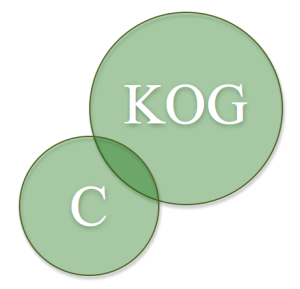
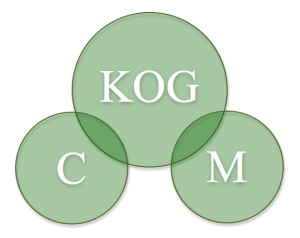
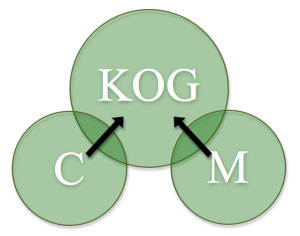
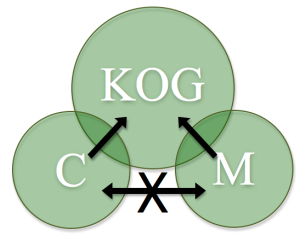
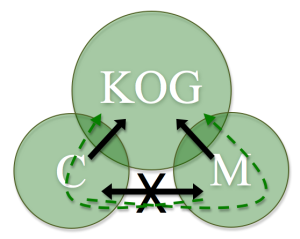
Pingback: The Kingdom Circles - Gospel News Network